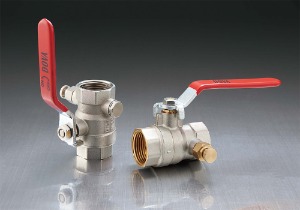2025-07-11
Brass mini ball valves are essential components used in various fluid and gas control systems. They are known for their compact design, durability, and high resistance to corrosion, making them a preferred choice in many industries, including plumbing, HVAC, automotive, and even irrigation. Despite their small size, brass mini ball valves offer reliable performance for controlling the flow of water, air, and other fluids.

One of the important aspects when selecting a brass mini ball valve is its size, which directly impacts the valve's performance, application suitability, and ease of installation. Understanding the size information of brass mini ball valves is crucial to ensure you choose the right valve for your system. In this article, we will explore the key size considerations for brass mini ball valves, covering the common sizes, how they are measured, and the factors that influence size selection.
Mini ball valves are typically used in situations where space is limited, but reliability and precise flow control are still necessary. They are commonly found in residential and industrial applications, including faucets, pumps, HVAC systems, and even some medical devices.
The size of a brass mini ball valve is typically defined by its nominal pipe size (NPS) or diameter. The nominal size refers to the approximate inner diameter of the valve's bore, and it is used to describe the valve's capacity for handling fluid or gas flow. The size is commonly measured in inches or millimeters and typically ranges from small sizes like 1/8-inch to larger sizes.
The common sizes of brass mini ball valves include:
1/8-inch (3.175 mm)
1/4-inch (6.35 mm)
3/8-inch (9.525 mm)
1/2-inch (12.7 mm)
3/4-inch (19.05 mm)
The size of the valve will determine its flow capacity, pressure rating, and application suitability. Smaller valves are often used in low-flow systems or applications requiring precise flow control, while larger sizes are used in systems with higher flow rates or more significant pressure demands.
The size of a brass mini ball valve is generally indicated by the nominal bore size, which corresponds to the inner diameter of the valve's opening. In the case of NPS (Nominal Pipe Size), the size refers to the inner diameter of the connected pipe, not the valve's actual measurement.
For example:
A 1/4-inch mini ball valve typically corresponds to a valve with a bore diameter of around 0.25 inches.
A 3/8-inch mini ball valve would have a bore diameter of about 0.375 inches.
However, the actual external dimensions of the valve, such as the length and width, can vary slightly depending on the manufacturer and the design. This is why it is crucial to check the specifications provided by the manufacturer to ensure compatibility with the installation space and piping system.
While the size of the ball valve is crucial for determining its capacity, the pressure rating and flow capacity are also important factors that influence the valve's size selection. A larger valve typically has a higher flow rate, but it also needs to be able to withstand the required pressure for the system.
Flow Rate: The flow rate of a brass mini ball valve depends on its size and the fluid or gas being controlled. For smaller sizes like 1/8-inch and 1/4-inch, the flow rate is typically lower, while larger valves like 1/2-inch and 3/4-inch allow for higher flow.
Pressure Rating: Mini ball valves come with different pressure ratings, which determine the pressure they can handle. This can range from low-pressure systems to high-pressure applications, depending on the design and construction of the valve. The pressure rating is influenced by the material (brass) and the design of the valve.